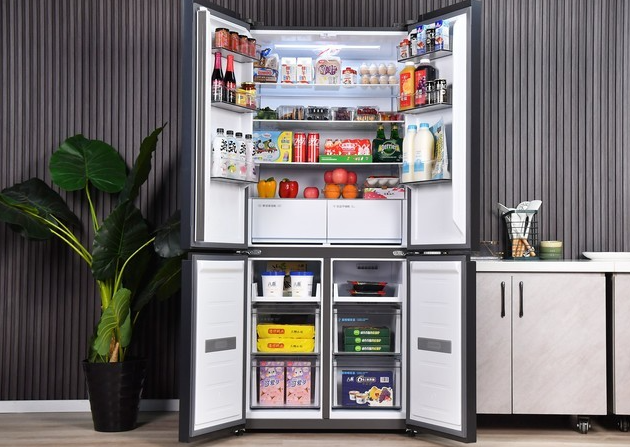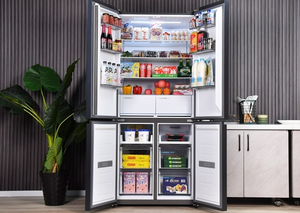
Refrigerator Inspection Standards and Methods Professional Guide Inspection and Audit Services for Warehouses and Factories
As a core household appliance that ensures the freshness and safety of food, the quality of refrigerators directly affects the user experience and brand reputation. During the inspection, factory verification, and product certification processes of refrigerators, implementing a systematic and rigorous set of standards is of utmost importance. This article will comprehensively analyze the inspection process, determination criteria, and inspection methods of refrigerators, providing you with professional quality control basis.
I. Core Process and Acceptance Criteria for Refrigerator Inspection
1. Outer Packaging Inspection
The first step in the inspection process is to conduct a systematic inspection of the packaging. This is the initial certification step for the integrity of the product during transportation.
Packaging box body: The edges are complete and straight, with no severe dents or abnormal holes.
Wrapping tape: There should be no excessive looseness. The edges of the grooves made on the surface of the box should be straight and without any collapse.
2. Inspection of appearance quality after unpacking
After opening the package, a detailed inspection of the product's appearance should be conducted. This is a fundamental item in the factory inspection process.
Protective materials: The plastic bags should be flat and free from any damage, and the packaging foam should be intact and clean.
Body surface: The paint finish is bright and shiny, without scratches, dents or collision marks. Special attention should be paid to whether there is any deformation caused by rough handling at the bottom of the refrigerator.
Door body and sealing: The gap between the upper and lower door frames is uniform, and the door seal is flat without any damage. The airtightness of the door seal can be tested by the "paper strip method" (after closing the door, the paper strip cannot be easily pulled out) or the "flashlight illumination method".
Internal and Accessories: The inner liner is clean and free of any foreign objects. All shelves and drawers are in good condition. Check whether the instruction manual, warranty card, and certificate of conformity are complete, and confirm that the accessories are consistent with the list.
3. Power-on Performance Test
The power-on test is a crucial step in the inspection process to verify the core functions of the product.
Operating status: There is no abnormal noise or vibration after startup.
Cooling effect: After being powered on for 10 to 15 minutes, there should be a significant temperature rise on the heat dissipation side. Touch the inner wall of the freezer with a wet hand and it should have a noticeable sticky feel. This is a preliminary verification of the cooling performance.
Installation confirmation: After installation, the refrigerator should be placed stably without any shaking.
4. Identification and Document Authentication
It is confirmed that the machine is marked with the CCC certification logo and the China Energy Efficiency Label.
Verify that the product model is exactly the same as that on the invoice and contract, and ensure that the goods and documents are consistent.
II. Professional Grading Standards for Refrigerator Appearance Inspection
During factory inspection and final inspection, the appearance of refrigerators should be graded and certified based on the importance of the region.
Area A (Very Important): The surfaces that can be seen at a glance when standing, such as door panels, front ends of roof covers, side panels, and the front surfaces of cabinets. The tolerance for defects in this area is the lowest.
Zone B (Important): Easily visible surfaces, such as the inner lining of the door, door shelves, drawers, door seals, etc.
Zone C (more important): Such as the front and rear panels of the inner liner of the box, and the surface of the condenser.
Zone D (General): For items such as compressor covers and electrical junction boxes, the appearance requirements for this area are relatively lenient.
Test conditions: The dedicated inspector conducts a visual inspection at a distance of approximately 750mm from the object under a 40W fluorescent lamp. The inspector's vision must be no less than 1.0 and they must be free from color blindness.
Cleanliness certification: Wipe each surface with a clean white cloth. There should be no obvious stains on the cloth. There should be no visible oil, dust or foam residue in the compressor compartment.
III. Inspection and Judgment of Common Faults
During the inspection process, if the following issues are found, they can serve as important bases for rejecting or requiring rework:
No cooling: Even after confirming that the power supply and thermostat settings are correct, the device still does not function. This is a serious performance failure.
Refrigeration failure: It is necessary to investigate whether it is caused by insufficient sealing of the door, excessive storage of items, or environmental factors, in order to distinguish whether it is a product defect or improper use.
Abnormal noise and startup failure: After power-on, a "buzzing" sound occurs and then the machine stops. This might be due to low voltage; a "humming" sound indicates protection, which could be caused by high voltage or a problem with the compressor. Such issues need to be rechecked under the standard voltage for inspection.
Poor sealing of the door and blocked drainage holes: These are common manufacturing defects and should be carefully inspected during the inspection process.
IV. Inspection Criteria and Certification Process
Sampling Plan: Based on the batch size, samples are randomly selected in accordance with recognized sampling standards (such as AQL).
Overall assessment: Based on the inspection results of multiple aspects such as appearance, performance, safety, and identification. If there are any serious defects in Area A or any critical performance fails, this batch of goods can be determined as not passing the inspection.
Records and Reports: All inspection data, test results, and non-conformities must be meticulously documented to create a formal inspection report, which serves as the evidence for quality certification and release.
By implementing the comprehensive inspection process covering appearance, performance, safety and documentation, the quality of the refrigerator can be scientifically evaluated, risks can be effectively controlled, and the product can be ensured to meet national standards and enterprise regulations. This lays a solid foundation for successfully passing the customer inspection and market supervision certification.
Share this product

Refrigerator Inspection Standards and Methods Professional Guide Inspe
As a core household appliance that ensures the freshness and safety of food, the quality of the refrigerator directly affects the user's experience.
